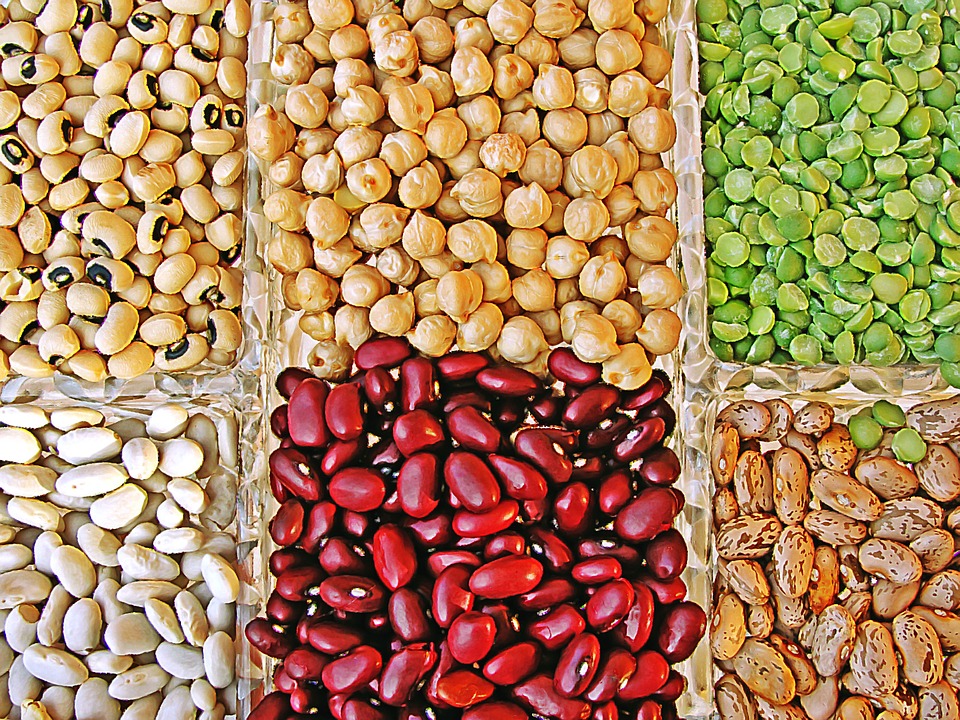 (Photo: Pixabay). Pulses (Leguminosae) are represented worldwide with many genera and about 13000 species. With the beginning of agriculture and the domestication of cereals, pulses also became crops. The domestication took place in the Fertile Crescent about 10,000 years ago, but also in Ethiopia, India, China, Mexico and South America. Starting from 8,000 B.C. the cultivation of pulses is demonstrated with archaeological findings. The oldest findings come from Jericho. Only 2,200 B.C did the pulses get into the western Mediterranean. All pulses can produce valuable protein from atmospheric oxygen with the aid of bacteria on their roots (nitrogen fixing). The biologically bound nitrogen is in the root nodules and can be used by the plant. Thus all pulses are protein rich and grow on unfertilized soil. The symbiosis of bacteria and plant is a highly effective natural system, with can carry out a synthesis reaction (protein from atmospheric nitrogen), which otherwise can only be produced in large scale technical machinery at high energy consumption (industrial fertilizer production through the Haber-Bosch procedure).
(Photo: Pixabay). Pulses (Leguminosae) are represented worldwide with many genera and about 13000 species. With the beginning of agriculture and the domestication of cereals, pulses also became crops. The domestication took place in the Fertile Crescent about 10,000 years ago, but also in Ethiopia, India, China, Mexico and South America. Starting from 8,000 B.C. the cultivation of pulses is demonstrated with archaeological findings. The oldest findings come from Jericho. Only 2,200 B.C did the pulses get into the western Mediterranean. All pulses can produce valuable protein from atmospheric oxygen with the aid of bacteria on their roots (nitrogen fixing). The biologically bound nitrogen is in the root nodules and can be used by the plant. Thus all pulses are protein rich and grow on unfertilized soil. The symbiosis of bacteria and plant is a highly effective natural system, with can carry out a synthesis reaction (protein from atmospheric nitrogen), which otherwise can only be produced in large scale technical machinery at high energy consumption (industrial fertilizer production through the Haber-Bosch procedure).
Pulses are annual or biannual herbaceous plants, bushes and trees. In many species the shoot grows in a usually clockwise circle.
Because of their high protein content and the high yields on small surfaces pulse seeds and fruits are almost everywhere in the world important parts of human nutrition. Especially with low-meat or vegetarian nutrition they are almost essential. Peas, chickpeas, beans, Adzuki beans, lima beans, soy and lentils are examples, which belong to the subfamily Faboideae. Some pulses can be eaten raw (e.g snow peas).
North of the Alps the soy bean (Vicia faba) had the predominant role among pulses already in the Bronze Age (2000 B.C.).







